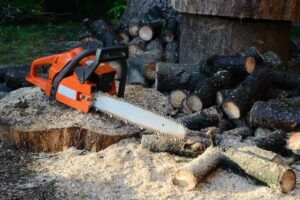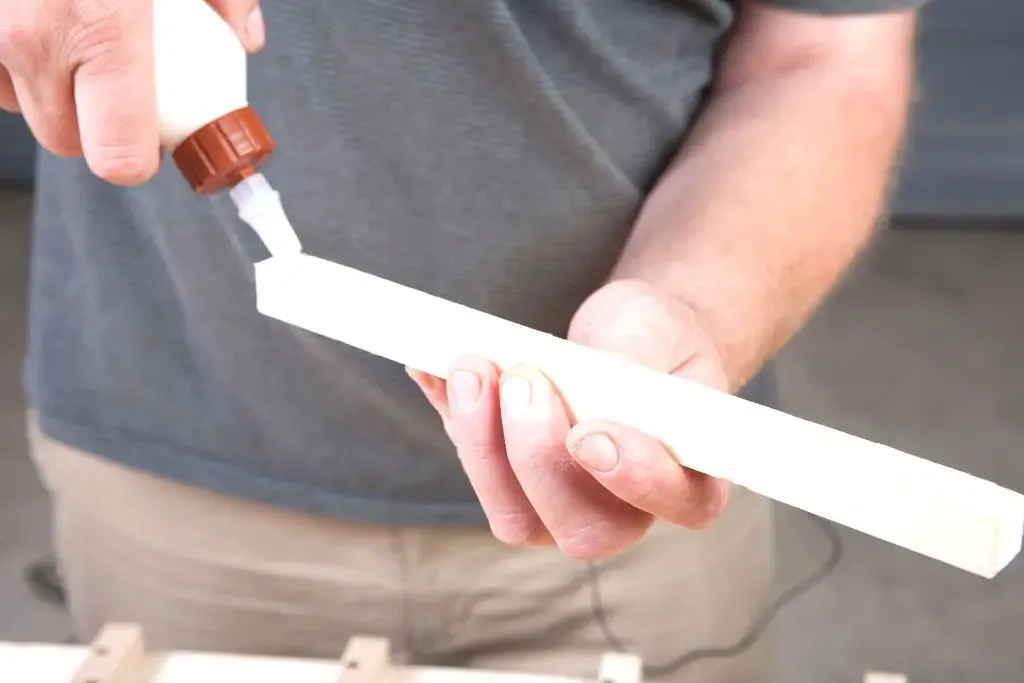
Wood glue is vital for woodworkers in joining pieces of wood. It is made to bond with wood and other materials like paper. Therefore, you can be able to construct wooden structures.
Nevertheless, wooden pieces attached to glue should be allowed to dry. So, how long does wood glue take to dry?
The drying time depends on the type of glue, among other conditions. Wood glue can take from 20 minutes to 24 hours to dry.
If joined pieces of wood are not allowed to dry adequately, the bonding might be weak. Faster-drying wood glue may allow you to complete a wooden structure in time.
Below are more details on the time taken for wood glue to dry.
Table of Contents
What Are the Common Types of Wood Glue?
Currently, you can find different types of wood glue in the market.
Different types of wood glue are used for a particular purpose. Some types of wood glue dry faster, while others take longer.
Here are common types of wood glue:
- PVA (Polyvinyl Acetate) wood glue: It is a modern glue that includes Elmer’s, Gorilla, and Titebond.
- Polyurethane glue: The glue is known to have strong adhesion. It takes quite a long to cure and dry, but it remains among the favorite glues.
- Hide glue: It has been used for traditional woodworking techniques since immemorial.
- Epoxy glue: Mostly used to fill and seal gaps.
- CA glue: Also known as a cyanoacrylate, the glue is used as super glue and has exceptional holding qualities, yet not the strongest.
How Long Do Various Wood Glue Take to Dry?
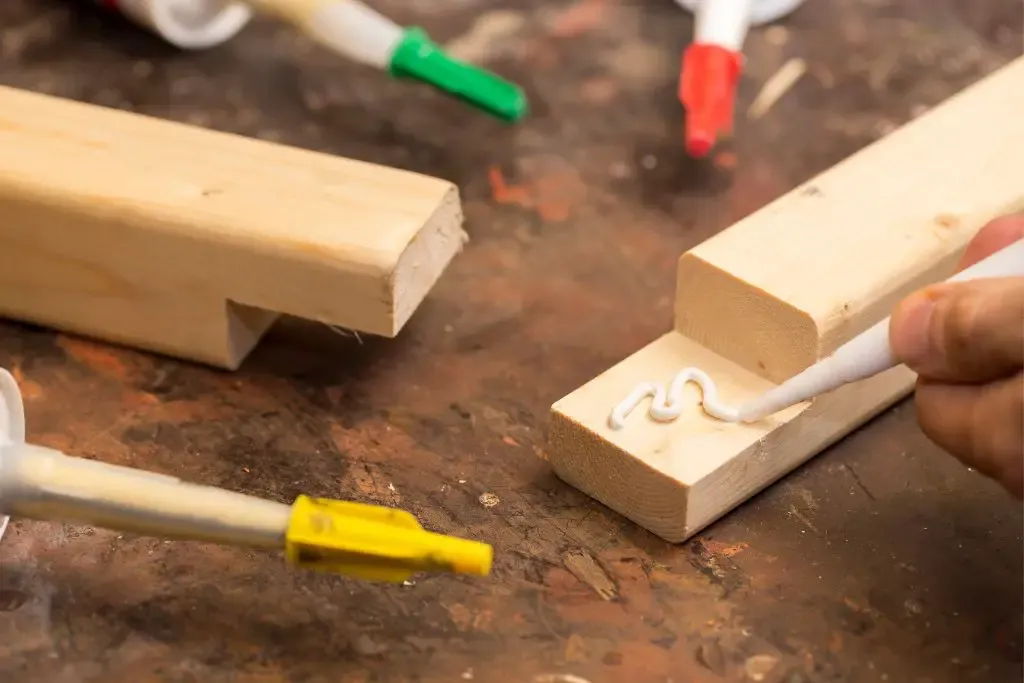
Normally, wood glue will cure within 24 hours. But exactly how long does wood glue take to dry?
It all depends on the brand and type of wood glue. Other conditions like temperature and moisture level also impact drying time.
Generally, you should allow a minimum of 24 hours for wood glue to dry before unclamping attached pieces. Even when the wood glue has dried, it takes longer to cure and form strong bonding.
While cyanoacrylate wood glue dries faster, polyvinyl acetate (PVA wood glue) takes longer. Here is the time taken for different wood glues to dry and cure.
Drying Time of PVA Wood Glue
The glue dries within 30 minutes and completely cures in about 24 hours. Ensure that the pieces of wood are clamped at the joint for 30 minutes. Then allow the glue to cure for 18 to 24 hours and form strong bonding.
Once the glue is cured, you may not be able to separate and rejoin the joint. So, it would help if you made some adjustments before the PVA glue dries and hardens.
Some of the benefits of PVA (Polyvinyl acetate) glue include the following:
- Popular and easily available in stores
- Non-harmful fumes
- Does not yellow with time and is fairly flexible.
Drying Time of Cyanoacrylate Wood Glue
The wood glues can dry in less than 30 seconds. But it should be left for about eight hours to bond to full strength.
The adhesives are called super glue or instant because of super-fast drying times.
As cyanoacrylate glues are known, CA has excellent holding properties but isn’t the strongest.
Hence, they are mostly used to form attachments in small wood chip repairs.
The benefits of CA glue are as follows:
- Has exceptional holding properties
- Fast cure time
Drying Time of Polyurethane Glue
Polyurethane glue requires about two hours to dry. Nonetheless, about 24 hours is necessary for the glue to dry and cure fully. During this time, the joint should remain unstressed.
With proper handling, the glue creates super-strong bonding. It can bond metals and wood. Both fast and slower-drying variants are available.
The benefits of polyurethane glue are:
- Contains less moisture
- It is used in gluing finished pieces
Drying Time of Hide Glue
It is a natural glue obtained from animal hides. Thus, it is non-toxic and eco-friendly. The glue dries quickly, requiring 20 minutes to set and dry while pieces are clamped.
But it should cure for approximately 24 hours for full-strength adhesion.
Drying Time of Epoxy Glue
The adhesive is among those glues that take longer to dry. It may require between 24 and 72 hours to cure and fully attain the highest bond strength. Epoxy glue uses resin and a hardener, thereby forming strong bonding.
Besides, the glue is waterproof and thus appropriate for outdoor wooden projects. It is available in variants that dry fast and slow.
Epoxy is brilliant in filling gaps in wood with ease. Some of its benefits are:
- It is waterproof and an ideal filler
- Creates stronger bond if allowed to cure properly
Does Wood Glue Cure Time and Set Time Mean the Same?
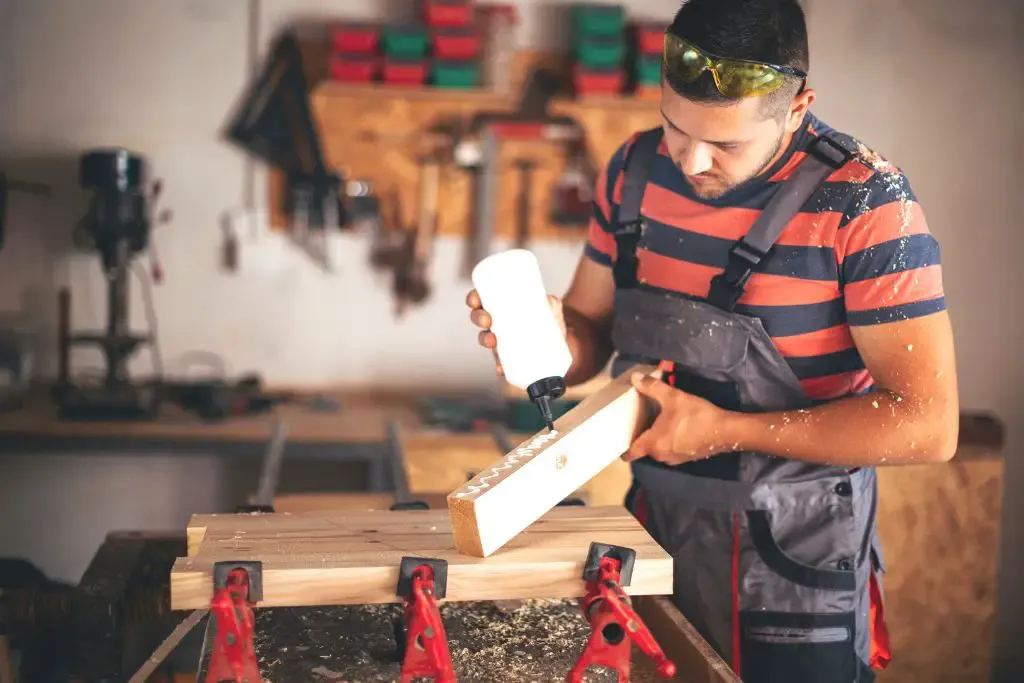
Often, the terms cure and drying are used interchangeably. However, in most cases, wood glue can dry but is not necessarily cured.
Consequently, a complete wood glue cure may require more time after drying. Glue is said to be cured when the bond achieves full strength.
Setting time is the duration wood glue takes to form adequate adhesion strength between attached wood pieces. It is the duration glue transforms from liquid to solid, hence noticeable hardening.
In summary, glue is set if it has just hardened and dry when strong enough to hold joined pieces without clamping. Finally, it is cured when the bonding is fully strong.
Which Conditions Can Influence Drying Time of Wood Glue?
Already we know different types of wood glue have varying drying times. In addition, certain factors can also influence the drying time of wood glue.
Here are those conditions:
Humidity
Humid environments contain high moisture content in the air. As a result, the evaporation of moisture from the glue is reduced. The wood glue will take longer to set, dry, and cure.
On the other hand, in a low-humid environment, the surrounding air is drier. So, the drier air will support moisture evaporation from the wood glue. In such conditions, wood glue dries faster.
Temperature
In a warm, dry climate, the wood glue will set and dry more rapidly. But in cold environments, you may have to wait longer for strong bonding to form. Nevertheless, there is a range of temperatures appropriate for faster glue drying.
Extremely high temperatures may cause some wood glues to melt. That’s unless the glue is resistant to high temperatures. You may need to apply wood glue in a temperature-controlled place for better results.
Moisture Content of Wood
Wood is porous to allow water to move up and down the trunk. So, when a tree is cut down, its wood contains a pocket of moisture. Thus, the amount of moisture can influence the wood glue drying time.
For instance, freshly cut or damp wood may have high moisture. Wood glue drying happens when its moisture evaporates into the surrounding air.
The wood glue moisture evaporates through the wood. So, if the wood has a lot of moisture, it slows moisture evaporation from the glue. Therefore, the wood glue drying process is prolonged.
A drier wood will readily soak the liquid in glue. Hence, this allows the wood glue to set and dry quickly.
Ventilation
The wood glue drying process requires sufficient circulation of air. The movement of dry air sweeps away with-it moisture from wood glue.
Consequently, wood glue will lose its moisture and dry rapidly. Ventilation is also necessary for you. Working in a ventilated space ensures that harmful chemicals are kept away. So you won’t breathe in many chemicals.
Working in an open space can greatly improve wood glue drying time. Alternatively, you can keep windows and doors open to improve ventilation.
Wood Type
Some woods are more porous than others. If the wood you are working on is more porous, it can absorb more glue.
Therefore, it forms a thicker layer of glue. The thicker layer of wood glue will take longer to dry.
In contrast, denser and less porous wood sucks less wood glue. The layer of glue created as a result is thin. Thus, the wood adhesive takes less time to dry.
Conclusion
If you are a woodworker, wood glue is vital for constructing wood structures. A wide variety of wood glue is available in the market. Each wood glue has its properties.
The choice of wood glue will depend on its purpose, the time it takes to dry, and its bonding strength. Each wood glue has its pros and cons.
You should do your homework and decide the wood glue is best for your situation.
Whether you choose faster-drying or slower-drying wood glue, you must provide the right conditions for better drying and curing.

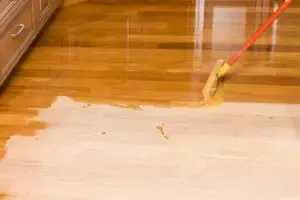

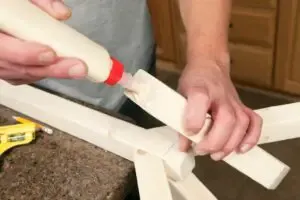
![9 Best Pole Saws of 2023 [Ultimate Guide] 9 Best Pole Saws of 2023 [Ultimate Guide]](https://handykeen.b-cdn.net/wp-content/uploads/2021/03/best-pole-saw-300x200.jpg)
